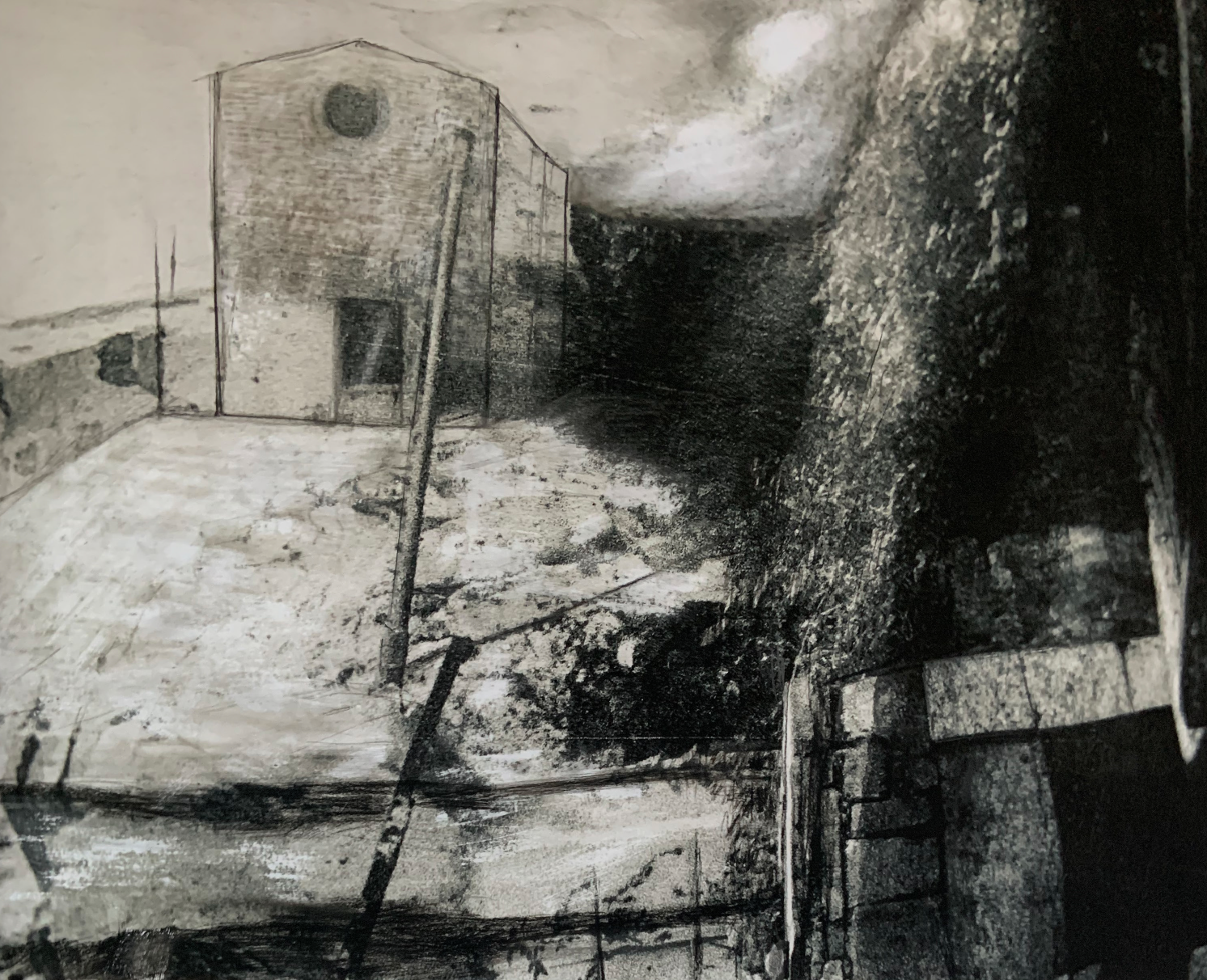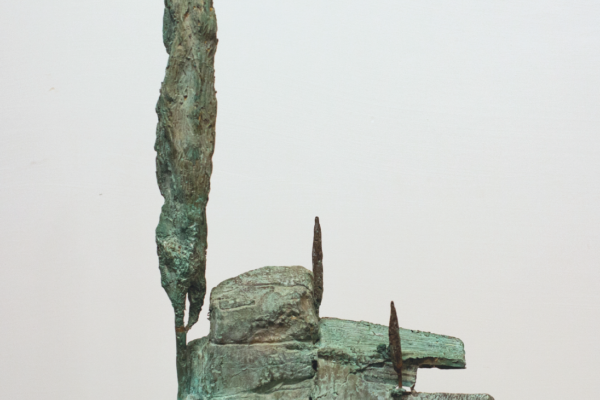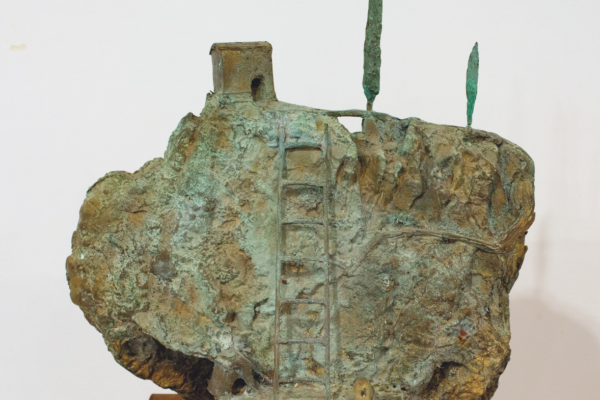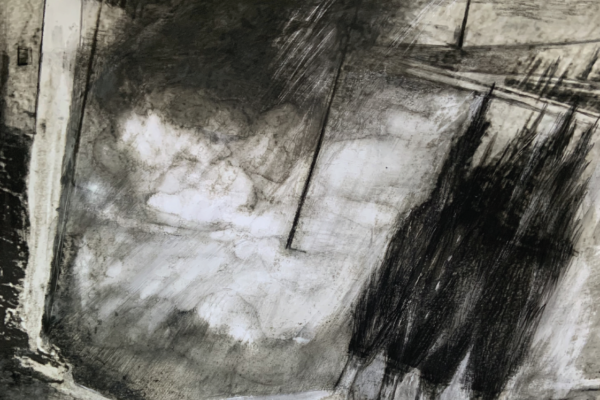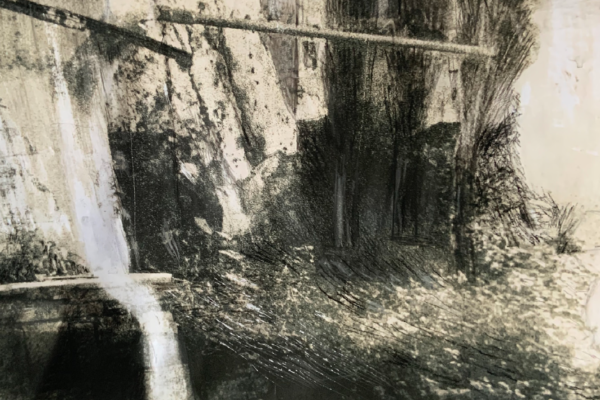In the ample space of the sheet, Bimbi presents the austere vision of a ruin surrounded by shadows and barriers impeding access, seemingly to indicate modern man difficulty in reconnecting with history and the past, even when these are still recent.
Three Steps from There
Adriano Bimbi
Bibbona (Livorno), 14 February 1952
While still an adolescent, Bimbi met in Cecina some painters of the Livorno school who helped him realize his disposition towards art. At the Accademia di Belle Arti in Florence he enrolled in the school of Fernando Farulli, first a teacher and then a lifelong friend. Farulli presented him to the public in 1973, in the show “Artists Propose Artists,” and involved him in a project on the reality of workers’ lives in Piombino, which culminated in the show “Piombino 1973-76, an experience of work in an industrial city,” mounted at the Accademia delle Arti del Disegno. In 1975 Bimbi became Farulli’s assistant at the Accademia and began working with engraving and sculpture, presenting his results in 1980 at the Bandini gallery in Cecina, with an introduction by Renzo Federici. A meeting with Mario De Micheli marked the 1980s: the critic invited him to participate in shows in Aosta, Milan, and Genoa. It was De Micheli who presented the bronze sculpture Bimbi made in 1983 for the 90th anniversary of the founding of the Camera del Lavoro (labour union centre) in Cremona. Bimbi considers important also his friendships with the painters Leonardo Cremonini and Sergio Vacchi, who hosted his show “Farther Away from Here. Studies of Landscape” in 2009 at the Castello di Grotti, near Siena.
In most recent years the artist has solidified his ties with Tuscany through two personal shows held in 2019: “Furrowed Hills and Hanging Houses. The Impervious Views of Adriano Bimbi,” curated by Antonio Natali, and “Forms of Absence. Adriano Bimbi: Sculptures and Drawings,” organized by Paolo De Simonis and Roberto Mancini.


